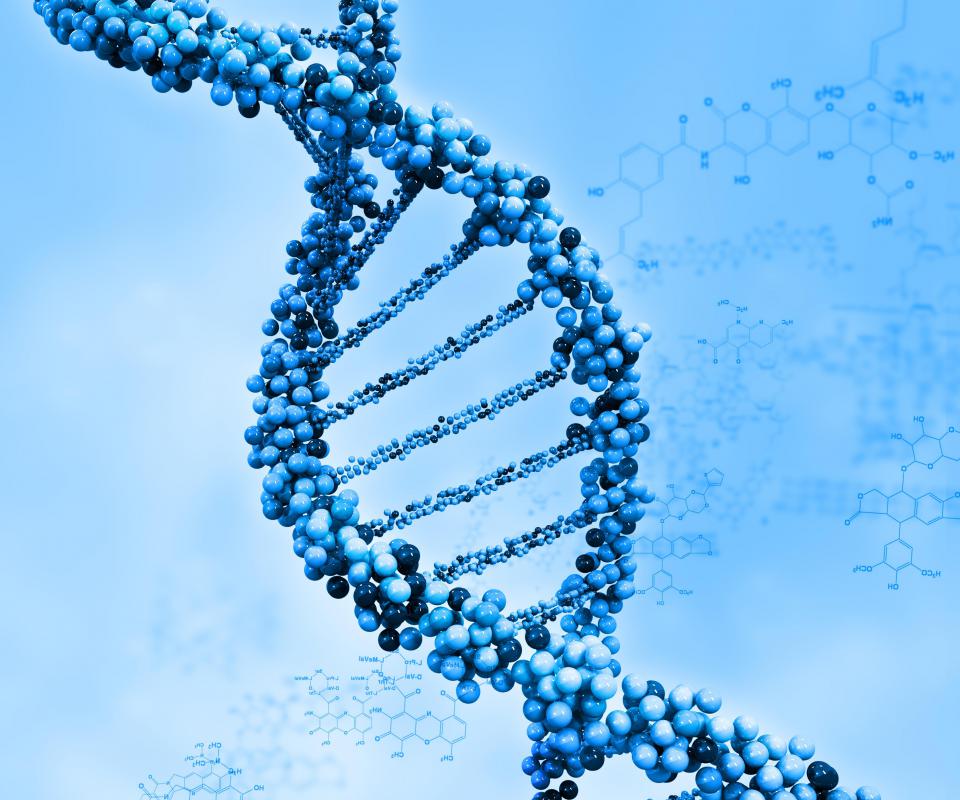At WiseGEEK, we're committed to delivering accurate, trustworthy information. Our expert-authored content is rigorously fact-checked and sourced from credible authorities. Discover how we uphold the highest standards in providing you with reliable knowledge.
What is the Fluorescent in Situ Hybridization Technique?
Fluorescent in situ hybridization, also known as fluorescence in situ hybridization, is more commonly referred to as FISH. It is a technique that involves using a short strand of DNA labeled with a fluorescent dye to detect genetic abnormalities. FISH allows investigators to visualize chromosomes, parts of chromosomes, or specific genes quickly and accurately. This is often used to determine the prognosis of and treatment for certain diseases, particularly cancers.
FISH is used to determine if chromosomes have abnormalities. This may include chromosomal deletions, rearrangements, or translocations, in which two chromosomes have switched segments. FISH also allows investigators to visualize specific genes. It can determine if a certain gene is present, where it is located on the chromosomes, and if multiple copies are present. This is called gene mapping.

The genetic makeup of a person is contained in their DNA, which is located in the nuclei of all their cells. DNA has two strands that are complimentary to each other. In other words, they have molecules called base pairs that match together exactly. Genes are segments of DNA that have a particular sequence of base pairs and are located on specific areas of chromosomes. Genes are inherited and determine how cells function, but they can also become mutated if the sequence of DNA base pairs changes.

The fluorescent in situ hybridization technique takes advantage of the complimentary nature of DNA strands. Investigators first create a probe. This is a short, single strand of DNA that is complimentary to the genetic sequence the investigator is looking for. The probe is then labeled or attached to a fluorescent dye.
Cells from diseased tissue, such as a tumor biopsy, usually make up the sample to be examined by FISH. The sample is heated to denature the DNA in the nuclei of the cells. This means that the double strands of DNA in the sample cells break apart to form single strands. A specific FISH probe is then hybridized with the sample. In other words, the probe’s single strand is introduced and fuses with its complimentary single strand in the denatured sample cells.

Using a special fluorescent microscope, the researcher looks at the sample. If the specific gene or chromosome is present in the sample cells, it will appear as a fluorescent light against a darker background. Researchers can easily see if the gene is present or not, and if it is, how many copies of the gene are in each cell. If the researcher is looking for the location of a gene, he or she can see where on the chromosome it is. A regular light microscope cannot be used with FISH, because the fluorescent dye gives off a very low level of light.

Use of DNA hybridization with probes was first accomplished in the 1960s; however, the probes were labeled with radioactive substances rather than fluorescent ones. This had several problems. Radioactive substances are inherently unstable, hazardous, and require special protocols for disposal. It also takes a long time to measure the radioactive signal emitted by the hybridized probe. The fluorescent in situ hybridization technique overcomes most of these obstacles.

If investigators know what gene they are looking for, FISH is fast and accurate at finding it. FISH can also be performed even if cells are not actively dividing, and it provides more specific information about abnormalities in chromosomes. More conventional techniques, such as karotyping, simply tell investigators the number and size of chromosomes within a cell.

Fluorescent in situ hybridization does have disadvantages. Since the key to FISH is knowing the base pair sequence and/or location of a gene, it cannot be used as a general screening tool. It is also more expensive than other, less specific techniques and may not be available in all laboratories or hospitals.
The advantages and disadvantages of fluorescent in situ hybridization are best described by example. FISH is routinely used in breast cancer diagnosis to determine if a patient has multiple copies of a gene called HER2. This usually indicates a more aggressive form of breast cancer, and that the patient should receive certain medications as part of their treatment. FISH can be used for this because the base pair sequence and chromosomal location of the HER2 gene are known. In contrast, FISH cannot be used to determine what unknown gene or genes has caused the breast cancer, or to screen for breast cancer in general.
AS FEATURED ON:
AS FEATURED ON:
















Discuss this Article
Post your comments